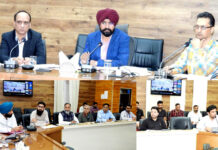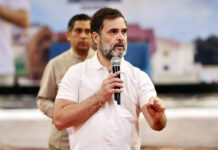Cleofato Almeida Coutinho
When the President of ‘Republic of India’ invites G20 delegates as ‘President of Bharat’ there is bound to be a controversy. The debates in the Constituent Assembly started on August 29, 1947 and concluded on November 26, 1949, which is now celebrated as the Constitution day. During the debates, no one referred to the country as ‘Bharat’ except during the discussion on naming the country. The country was referred to as India and by some as Hindustan. Since 1950 Bharat in Hindi and India in English are interchanging names. The founding fathers were for modernity based on science and technology and for a new country in the global setting. Those who rooted for ‘Bharat’ stood by ancient values. For them ‘Bharat’ instilled a sense of national pride and reinforced rich cultural heritage. ‘India’ accepted by the world got constitutional imprimatur 77 years back and a formal approval on the first Republic Day. Some countries have been renamed after independence: Ceylon to Sri Lanka, Dutch Guyana to Surinam, Gold Coast to Ghana, Nyasaland to Malawi, Northern and southern Rhodesia to Zambia and Zimbabwe respectively, Congo to Zaire, East Pakistan to Bangladesh, Zanzibar to Tanzania, Persia to Iran, Mesopotamia to Iraq, Formosa to Taiwan, Sian to Thailand, Burma to Myanmar, Holland to Netherlands, South West Africa to Namibia.
Should we follow the thinking of these countries and go back to ‘Bharat’ mainly driven by Vishnu Purana and Brahma Purana? Bharata was mentioned in the Rig Veda as one of the principal kingdoms of Aryavarta. Bharata comes from mythical Chakravarti Samrat Bharata, son of King Dushyanta and Queen Shakuntala, who were ancestors of the Pandavas and the Kauravas. It is believed that the great emperor conquered and reigned over Bharat Varsha – Sea in the south and the abode of snows in the North (ocean to the Himalayas). That ‘Varsha’ part of earth includes Pakistan, Bangladesh, Burma, Nepal, Tibet Afghanistan, Uzbekistan, Russia, Iran, China and Indonesia. The river ‘Indus’ earlier known as Sindhu which the Persians referred to as ‘Hindu’ and Greeks as ‘Indu’ gave the current name India. The first reference to India is to be found in King Alfred’s translation of Orosius – a history of world events written in Latin in the 5th century. The Mughals who ruled this subcontinent for nearly three centuries called this country ‘Hindoostan’ – land of Indus, but it is the East India Company that popularised the name India. Hence the belief that the name India is the vestige of the colonial past. The British Parliament enacted Government of India Act 1858 for transferring power from the East India Company to the King in England. India continues thereafter with the Government of India Act 1919, the Government India Act 1935 and the India independence Act 1947. It is believed Bharat lost out to India due to the colonial rule. Bringing Bharat back would be dethronement of the colonial past.
In the Constituent Assembly, there were initial deliberations on November 17, 1948 over the name. Initially it was ‘India shall be a Union of states’. At the instance of GB Pant the debate over the name was deferred. BR Ambedkar presenting a draft of Article 1, keeping in view the sentiment behind the pride and rich cultural heritage of Bharat. It read as India that is Bharat shall be a Union of states. Babasaheb was clear in his mind that continuity and familiarity among foreign countries needed to be retained. He said India has been known as ‘India’ throughout history and throughout all these past years. A heated debate, which started on September 17, 1949 over the name of the country, took place on September 18, 1949 amidst the pangs of Partition. In the post-Partition period, Hindustani as a language lost out to Hindi and it was obvious that ‘Hindustan’, which became popular during the Mughal period, would have no place. HV Kamat moved a resolution for Bharat. He claimed Article 1 was clumsily drafted. He said that in many countries India was known as Hindustan and its inhabitants referred to as Hindus, irrespective of the religion. Shet Govind Das said that we should indeed name to our country befitting out history and culture. For him, India is of recent origin. Kallur Subharao pitched for Sindhu, Kamlapati Tripati wanted ‘Bharat that is India’. Har Govind Pant stated that people from north India wanted Bharatvarsha and nothing else.
Ram Sahai was happy that Bharat would be accepted without any opposition. Seth Govind Das wanted Bharat as befitting our history and culture because it was found in the old Hindu literature. Har Govind Pant went a bit further: “…If we, even then, claim to the word ‘India’ it would only show that we are not shamed of having this insulting world which was imposed on us…” Those rooting for Bharat brought a clear parochial tinge on the drafting table. After a long and heated debate KV Kamat’s resolution was defeated with 38 votes and Ambedkar version getting 61 votes.
The Ambedkar-led brigade with Jawaharlal Nehru on its side stood their ground amidst and extremely emotive appeal of the ‘idea of Bharat’. They would not accept an understanding of Bharat as propounded, which bordered on near communal views undermining the national unity so required in the post-Partition period. They were all preparing for an all-inclusive architecture and slightest exclusivist overtones could derail the entire exercise. The duality was the outcome of the freedom movement. Article 1 of the Constitution was a clear compromise between forward vision and cultural sentiments. The RSS chief wants the country to go back to Bharat. In December 2012, in the wake of an extremely heinous rape and murder, he said such crimes hardly takes place in Bharat but they frequently occur in India. Perhaps he was referring to Delhi’s cosmopolitan culture. The Indian Council of Educational Research and Training, which prepares school textbooks, have proposed the next set of books printed with Bharat. India is being weaponised as Bharat for a narrow political vision. Catherine Clementine Ojha, a world renowned anthropologist, scholar and author tells us that the reference to Bharata does not refer to a country in the modern sense. She states that it was a Puranic memory of a naturally bounded (sea, mountains) region. According to her, choice of ‘India’ for juridico-political purposes and the duality in names was a necessity of that time. Change disrupts and brings in chaos. What is the cost of change of name? We have not calculated how much it cost to change the Mughal names of Aurangabad and Osmanabad to Sambhaji Nagar and Dharashiv respectively. The cost of Allahabad to Prayagraj in 2018 was about Rs 300 crore.
Swaziland to Esvantini cost about US $60 million. Derran Olivier, a South Africa intellectual property lawyer, claims that the cost of changing the name of India to Bharat would be about Rs 14,00,00,000, which is an amount equivalent to our country’s spending on food security monthly.
The government of India may have to spend further amounts in building the new brand. Additional amounts would have to be spent by corporate houses and other private individuals for publicity. Why spend to lose a brand value over a symbolic move? Hundreds of years ago –Shakespeare wrote ‘what is in name?’ That which we call a rose, by any other name would smell as sweet!
(Cleofato Almeida Coutinho is a practising advocate and a former civil judge. An ex-member of the Goa State Law Commission, he is a former faculty member in constitutional law.)




























